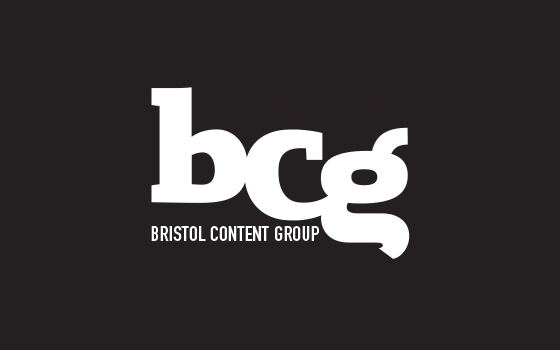Lead generation has to be at the center of any firm’s marketing strategy. That’s what we’re all here for — to attract and convert qualified leads who will later become new business. You may already rely on a steady stream of thought leadership content and automated email nurture programs to indiscriminately nurture your leads. As you should. But let’s be honest, while those strategies are a crucial part of your marketing efforts, they’re not the right approach for every lead you attract.
If you’re not making it a priority to identify which of your leads are most engaged and ready to take that next step, you’re overlooking a critical opportunity to drive revenue growth for your firm. You have to know which leads are ready for that next step and what that next step is to connect your marketing and sales efforts.
Not All Marketing Qualified Leads Are Created Equal
Let’s start with this: You need to identify marketing qualified leads (MQLs). They’re a subset of all your leads. MQLs are the leads that you identify as being right-fit for your firm based on their activity and your research. They have real potential to become clients.
How can you tell if they have this potential? Look for those who hit certain criteria based on your ideal customer. Do they have the right job title? Are they a decision maker within their organization? Is their company the right size? Do they have the right revenue?
Once you’ve completed this qualification process, you need to determine what kind of MQL you’re looking at.
“Early Stage” MQLs
Some of the people you mark as MQLs will simply be looking to you as an educational resource. You attract these followers when you’re a thought leader who regularly publishes content. Early stage MQLs will read your blogs, download your gated content, open your emails, and like your social media posts. But this is usually where their engagement ends.
They aren’t acting like buyers. At least not yet. So let them keep consuming your content and focus on the other camp: your potential buyers.
“Buyer” MQLs
The MQLs we’re most interested in will be looking to take their relationship with your firm to the next level. They’ll want to learn more about how you can specifically solve their problem. They’re taking actions that show they’re in the buyer’s seat.
Like your early stage MQL leads, these buyer candidates actively read your blogs and emails and convert on gated content. But here’s what makes these MQLs special: They’re looking at the seven pages that control your website’s prospect experience. Pages like positioning, case studies, and your “About” page.
Buyer MQLs are actively learning everything they can about your firm. You can just feel they’re on the cusp of making a buying decision. And, man, is that a good feeling. But you know what’s an even better feeling? Engaging these leads and starting a meaningful conversation that results in new business.
Send a Message Your Warm Leads Can’t Resist
You’ve identified those potential buyer MQLs you need to proactively engage. Now comes the exciting (although maybe also scary) part: actually reaching out.
Yes, you heard that right. It’s on you to get the ball rolling. Whether it’s via email or a LinkedIn message, proactive lead engagement can be tough to pull off and can feel a little unsavory.
The last thing you want to do is scare off potential business. You might worry that an out-of-the-blue email will come off as too Big Brother-y. You’re not alone in feeling this way. Do you really want your MQLs to know that you’re aware of every action they’ve taken on your website? Maybe you shouldn’t reach out after all …
Another valid fear is that you may leave your buyer MQLs underwhelmed by a perceptibly insincere attempt at outreach. Sending the same form letter to every single MQL means you risk coming across as generic and absolutely forgettable with an irrelevant message that feels like unfiltered spam. Again, you’re probably thinking it’s just easier not to do this after all.
And it’s true. Either extreme won’t result in good conversations or nurture your leads toward becoming clients. But you need to find a middle ground that demonstrates your understanding of their specific problem and doesn’t come on too thick. You also need to figure out a somewhat repeatable process for outreach so you’re not spending your entire day drafting one outreach message.
Because it’s just not acceptable to leave these buyer MQLs to their own devices. That’s leaving money on the table.
How to Engage a Marketing Qualified Lead The Right Way
As you get ready to send your message, keep in mind that you are the expert. And nothing undermines your expert stance more swiftly than bad sales outreach. Protect your expert stance at all costs by making sure your emails do three things:
- Acknowledge what your lead did. You don’t need to summarize every single page they visited, but if they converted on your latest eBook or white paper, thank them and tell them you hope they got something useful from it. Don’t worry about spooking them with this information. If they’ve converted (i.e., freely given you their contact information) in exchange for your resource, they know you know that. It’s 2023; no surprises there.
- Make it clear you’re a human. One, to establish common ground and build a little bit of trust. And two, to prove there’s no way this is an automated, boilerplate message. Maybe you met one of their colleagues at a trade show. Or you have a specific thought about what’s happening in their industry. Whatever it is, include a detail that screams, “I’m a real person!”
- Offer to continue talking. Don’t talk about your work, the clients you’ve helped, or your latest results. That’s what your case studies are for. This also isn’t the moment to ask for a sales conversation or share your pricing information. All you need to do is tell them you’re open to keep talking about the issue that keeps them up at night. Once and for all: This isn’t about you.
With all three of these components, you should wind up with a short note that looks something like this:
Hello [NAME],
Thanks for taking the time to look around our website and for reviewing our content on [TOPIC]. It looks like our [ADDITIONAL PIECE OF CONTENT] might be of interest to you.
SOMETHING YOU or YOUR FIRMS HAVE IN COMMON.
I’d be happy to have a call to discuss TOPIC, any time.
Regards,
[YOUR NAME]
What You Absolutely Shouldn’t Do Next
Now here comes the really hard part. Once you’ve sent your message, don’t follow up. Leave the ball in their court. Remember that experts educate. It’s not time to try and convince or sell or ask for anything. You’ve given them something to chew on and an opportunity to reach out for a helpful chat. The rest is up to them.
They’ll either get right in touch with you very quickly, or you won’t hear from them. It’s OK to try again in another few months, but only if they keep up their purchase-oriented activity on your website. Otherwise, you’ve done your part.
Never Let Warm Leads Cool Down Again
You’ve got your marching orders. Send those buyer leads an email (don’t forget the personal touch), and sow the seeds for strong new business.

